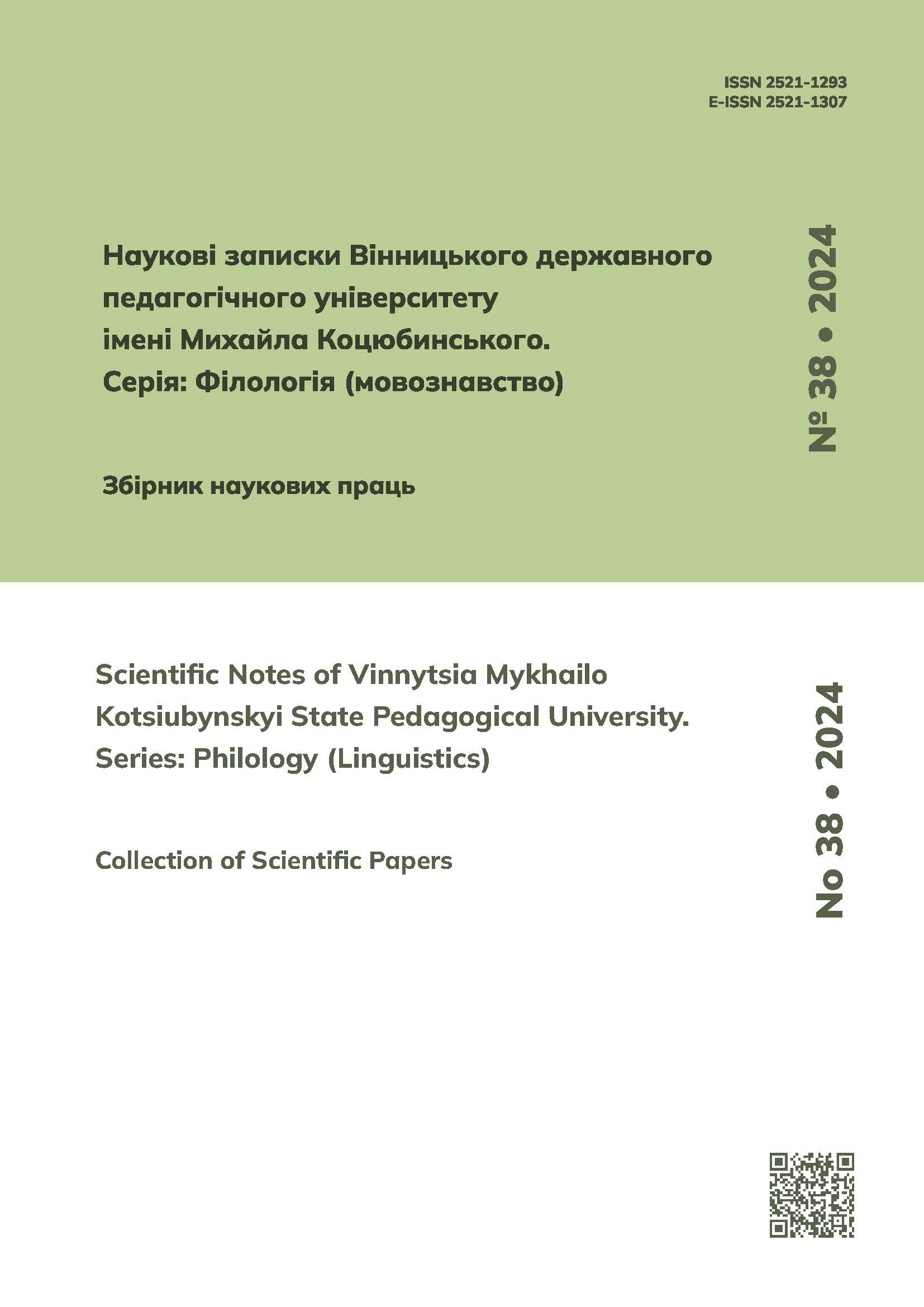Structural and semantic features of colour idioms in English business discourse
https://doi.org/10.31652/2521-1307-2024-38-05Published 2024-08-14
Keywords
- colour idioms, business discourse, semantic analysis, colour symbolism, structural analysis
Copyright (c) 2024 Nataliia Ishchuk, Anna Osadchuk, Iryna Serhushova

This work is licensed under a Creative Commons Attribution 4.0 International License.
How to Cite
Abstract
In recent years, the study of language has evolved to explore the intricate nuances that shape our communication. One fascinating aspect of language is the use of idioms, which enable speakers to convey emotions indirectly through metaphorical expression. Although idioms enrich language and enhance its expressiveness and vividness, they often cause difficulties for people learning English. Among the myriad of idioms, those related to colours stand out as vibrant and captivating elements of linguistic diversity. Colour is an objective quality of the material world, encoded by language signs into a diverse array of information. Colour schemes and their designations are universal elements of the larger colour symbolic system, composed of multiple subsystems each with their own function and structure. As carriers of information about the surrounding world, colour designations are meaningful topics for cognitive, psycholinguistic, linguistic, and cultural studies. Understanding the structural and semantic features of colour idioms is essential for unravelling the intricate threads that make up effective communication, especially in the context of business discourse. The purpose of this paper is to delve into the semantic and structural features of colour idioms used in English business discourse. General methods (analysis, synthesis, induction, deduction, classification), theoretical methods (system analysis), graphical, as well as methods of logical, system-structural analysis and connections, comparative and dialectical approaches have been used. Results. Colour symbolism, like any other, is based on the peculiarities of the human psyche, on various associations, which are based on everyday human experience, fed by mythological, religious and aesthetic views. Examining business idioms with the colour component we can say that the semantics of this component often differ from the semantics of the same colour name in free use. The meanings of different colours in business idioms were scrutinized. A detailed analysis was also carried out and a certain proportion of idioms was determined by structures and colours, and the corresponding diagrams were given. The study shows the prevalence of the blue colour (17%), followed by black (15%), red and white (13% each). The yellow colour appears to be less utilized, constituting only 2% of the analysed idioms. The analysis of the syntactic characteristics of colour idioms has shown the dominance of nominal idioms (80%), followed by verbal idioms (10%) with adjectival making up 6% and the adverbial being represented by 1 lexical unit (4%). The originality of this article lies in the study of the symbolism of colours in terms of their use in business phraseological units, and a detailed structural and semantic analysis of colour idioms used in business discourse. Conclusion. The study underscores the significance of colour idioms within the business vocabulary, emphasizing their relevance. Proficiency in these expressions not only enriches one's linguistic repertoire but also enhances communication skills. Business idioms are an important segment in the business vocabulary. Colour idioms occupy a large share in business phraseology, the study of which requires further research.
Downloads
References
- Berlin, B. & Kay, P. (1969). Basic colour terms: their universality and evolution. Berkeley: University of California Press, 207 p.
- CCDPV (2020) – Collins Cobuild Dictionary of Phrasal Verbs. HarperCollins Publishers, 2020. 592 p.
- Cerrato, H. (2012). The Meaning of Colors. Herman Cerrato Graphic Designer: New York, 2012. 31 p.
- CI – Colour idioms. https://www.englishclub.com/vocabulary/idioms-colour.php
- EIE – English Idioms and Expressions. https://www.learn-english-today.com/idioms/idiom-categories/colours/colours1-black-blue.html
- Gibson, T. & Conway, B. R. (2017). Languages don’t all have the same number of terms for colors – scientists have a new theory why. The Conversation. September 18. https://theconversation.com/languages-dont-all-have-the-same-number-of-terms-for-colors-scientists-have-a-new-theory-why-84117
- Hasanova, S. (2014). Linguo-cultural aspect of interrelation of language and culture. International Journal of English Lin-guistics, 4(6), 160-166. https://doi.org10.5539/ijel.v4n6p160 DOI: https://doi.org/10.5539/ijel.v4n6p160
- Hromohlasova V. 24 colorful English idioms that will make your English brighter. https://grade.ua/uk/blog/24-colour¬ful-idioms
- Kvetko, P. (2009). An Outline of English Phraseology. Trnava: Univerzita Sv. Cyrila a Metoda, 165 p.
- MWD – Merriam-Webster Dictionary. https://www.merriam-webster.com/dictionary/blue-pencil
- ODCIE (1991) – Oxford Dictionary of Current Idiomatic English: in 2 vols. / ed. by A. P. Cowie, R. Mackin. Oxford: Oxford University Press, vol. II. Phrasal Verbs. 690 p.
- OED – Online Etymology Dictionary. https://www.etymonline.com
- Oz Vitez. Brown Goods vs. White Goods: A Definiton and Brief Explanation. https://discover.hubpages.com/business/Brown-Goods-vs-White-Goods-A-Definiton-and-Brief-Explanation
- Steinvall, A. (2007). Colors and Emotions in English. Anthropology of Color: Interdisciplinary multilevel modeling, pp. 347–362. https://doi.org/10.1075/z.137.23ste DOI: https://doi.org/10.1075/z.137.23ste
- Waite, V. (2019). Human perception and interpretation of colour term idioms through their origins. Journal of Teaching English for Specific and Academic Purposes. 2019. https://doi.org/10.22190/JTESAP1902255W DOI: https://doi.org/10.22190/JTESAP1902255W





